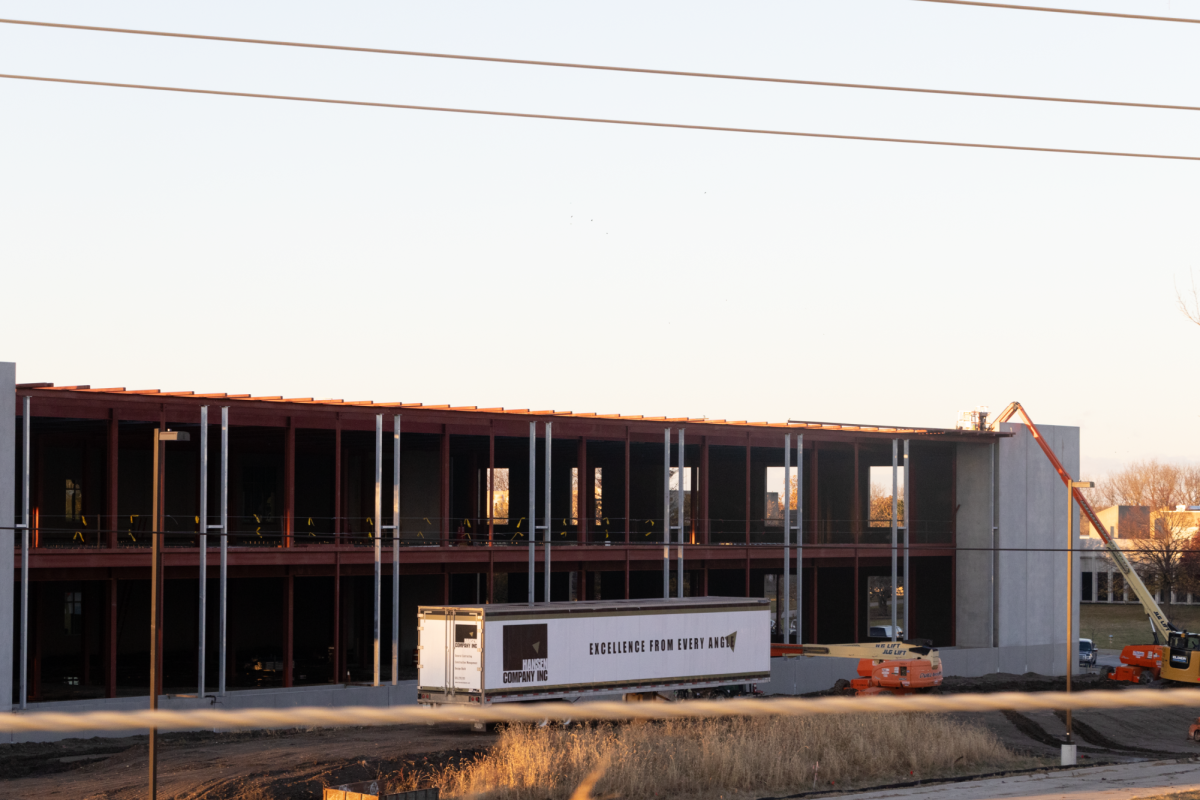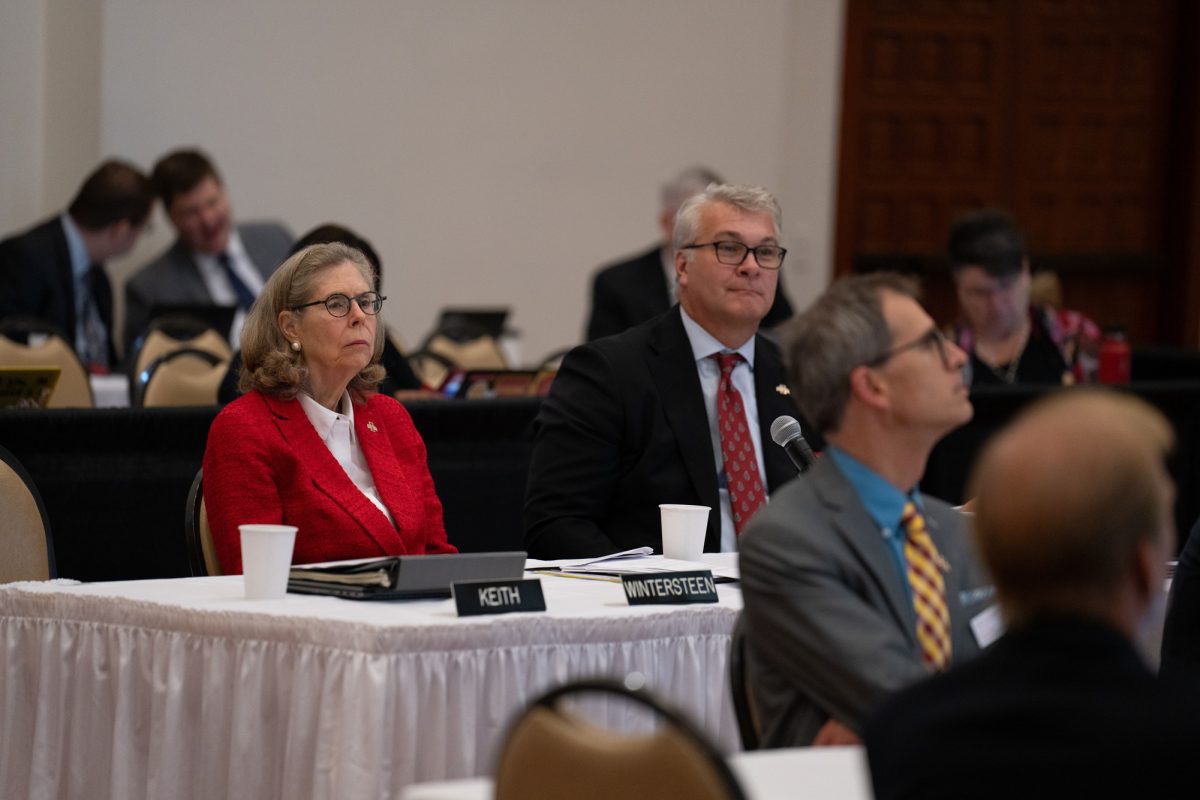Phase 2 of the new $141.5 million Veterinary Diagnostic Lab (VDL) is well into its construction, featuring state-of-the-art facilities that seek to improve research impacting the health of livestock, pets and even people.
The goal of Phase 2 is to bring all key veterinary diagnostic facilities under one roof, adding 78,500 square feet onto Phase 1 of the project, which was completed in April, according to previous Daily reporting.
The project, which began in April 2024, is on track to be completed in Fall 2026.
According to Dan Grooms, dean of the College of Veterinary Medicine, the addition to the facility will include laboratories and facilities to support molecular diagnostics, virology, serology and toxicology, which are all currently stationed in the old diagnostics facility.
Grooms highlighted the old facility’s age as a reason for new construction.
“The ability to conduct high quality diagnostic medicine in a 50 year old facility that’s really hard to update was becoming more and more difficult,” Grooms said.
The safety of any building is always a concern. However, that concern is amplified when the facility hosts important research alongside biohazard risks. This was another reason Grooms cited for requiring new construction.
“We had concerns when it came to both biosecurity and biocontainment,” Grooms said. “A 50 year old facility doesn’t have the same type of infrastructure necessary today to contain bacteria and viruses that we bring in.”
Building standards and human comfort are also key factors in the new facility.
“50 years ago, the diagnostic tests we used then are much different today.” Grooms said. “We need different infrastructure. We need open laboratories. We need different types of ventilation systems.”
According to Brett Van Zee, an architect at INVISION, the design firm for the VDL, flexibility was a consideration when considering the building’s program.
“The overall project will bring the entire Veterinary Diagnostics Department under one roof with consistent flexible laboratory spaces,” Van Zee stated in an email to the Daily.
Van Zee also hailed the comfort of the new building.
“The lab spaces were designed with lab safety in mind along with abundant access to natural daylight and exterior views,” Van Zee stated.
When the VDL is complete, it is expected to achieve a LEED Gold certification for its sustainable construction and operation, according to Van Zee.
“The Phase 1 project just received and confirmed its LEED Silver Certification,” Van Zee stated. “Phase 2 was challenged with its main building elevation facing south. Shading solutions were developed to manage solar heat gain and glare on this elevation while still providing significant exterior view and daylight.”
Phase 2 of the project is a continuation of the design from Phase 1, Van Zee stated.
Grooms described Phase 2 as “attaching” right onto Phase 1 of the project, utilizing the same infrastructure and materials. This makes the construction process simpler than a normal addition.
“We built Phase 1 knowing Phase 2 would come someday,” Grooms said. “There were windows that faced out, those are going to be hallways going into Phase 2. All the civil infrastructure–the water, the gas, electricity–all those things were considered in Phase 1.”
According to Grooms, the Phase 2 project’s $66.5 million budget came from three sources: $18 million from the State of Iowa infrastructure fund, $40 million of federal funding and $8.5 million from Iowa State and donors.
Pork producers and the Farm Bureau made significant donations to aid with construction costs, Grooms said.
“This is truly a partnership in creating these beautiful new buildings and every partner recognizes the importance of the College of Veterinary Medicine in supporting animal health and human health as well,” Grooms said.
Grooms called attention to recent discoveries and work done at the Veterinary Medicine labs, where a link was discovered between a mystery cow disease in Texas cattle and the Bird Flu.
The facilities at the College of Veterinary Medicine were responsible for COVID-19 testing samples through the university and also conduct rabies testing when bats are captured on campus.
“So, it has really important implications in both animal as well as human health,” Grooms said.
According to the Daily’s previous reporting, the laboratories handle over 120,000 cases and perform 1.6 million tests annually.
“This building will allow us to continue to be leaders in the Veterinary Diagnostic world,” Grooms said. “It will allow us to continue to elevate what we do when it comes to diagnostic medicine, both today as well as in the future.”














